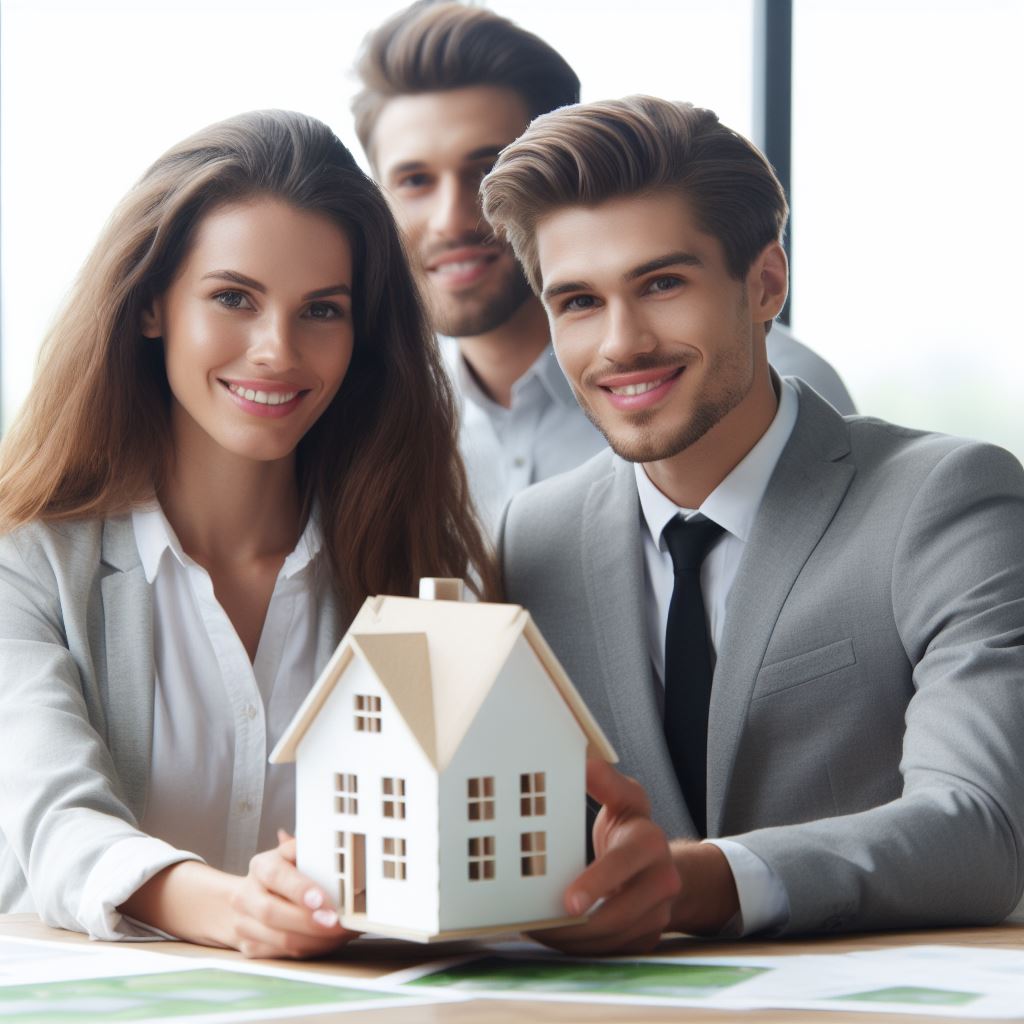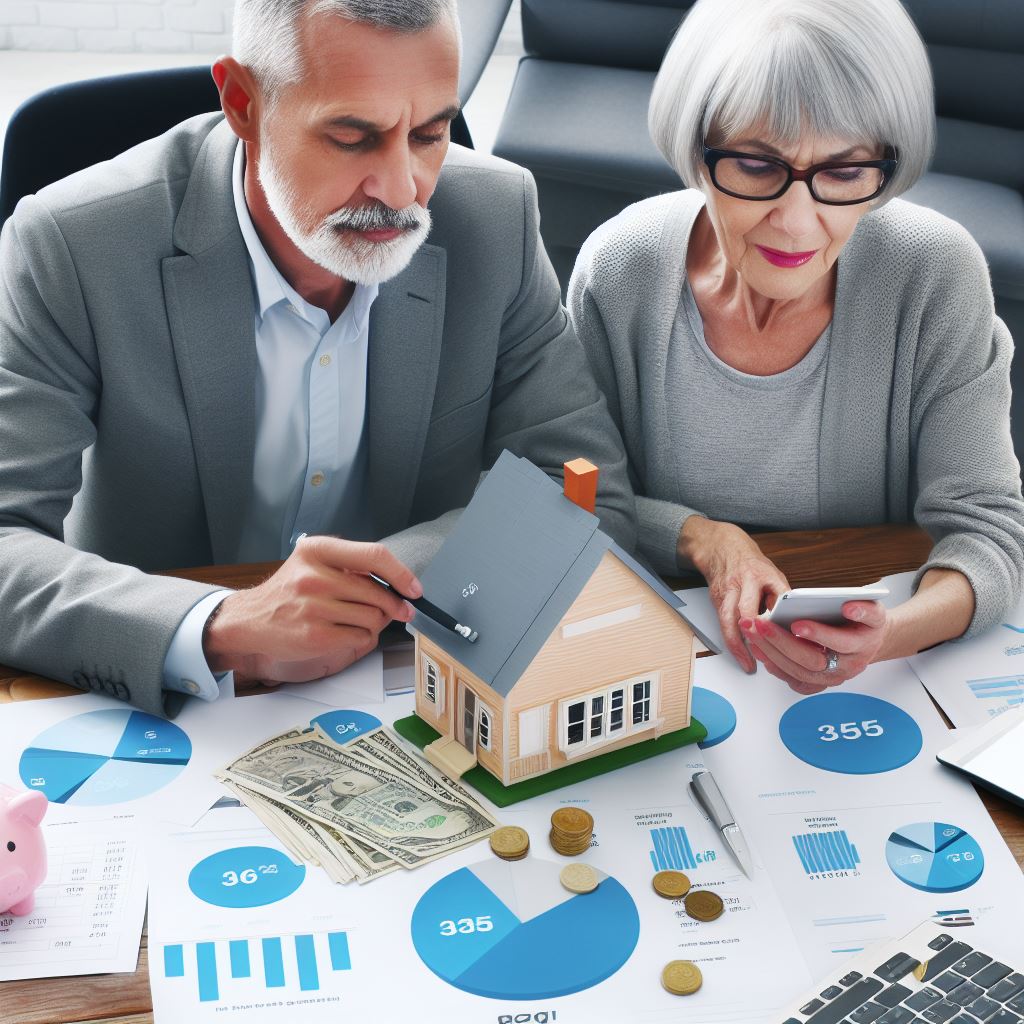Introduction
Eco-friendly homes are environmentally responsible and energy-efficient houses that promote sustainability.
There is a growing interest in eco-friendly homes due to increased awareness of environmental issues.
Eco-friendly homes, also known as green homes, are houses designed and built to minimize their environmental impact.
These homes are constructed using sustainable materials and energy-efficient technologies.
They are designed to reduce the consumption of resources such as water and energy, and minimize waste production.
In recent years, there has been a significant increase in the interest in eco-friendly homes. People are becoming more aware of the negative effects of conventional housing on the environment.
They are looking for solutions that can help them reduce their carbon footprint and live in a more sustainable way.
This blog post aims to provide a buyer’s perspective on eco-friendly homes. It will discuss the various aspects that buyers should consider when looking for an eco-friendly house.
The post will also highlight the benefits of living in an eco-friendly home, such as lower utility bills, improved indoor air quality, and reduced environmental impact.
By sharing this information, the blog post intends to educate and inform potential buyers about the advantages of investing in eco-friendly homes.
It will help them make informed decisions and choose houses that align with their values and goals.
In essence, eco-friendly homes offer a sustainable solution for those who want to minimize their environmental impact.
This blog post will provide valuable insights for buyers interested in purchasing eco-friendly properties. It will empower them to make choices that contribute to a greener future.
Benefits of Eco-Friendly Homes
Eco-friendly homes offer numerous benefits, making them an attractive choice for buyers. Let’s explore these advantages in detail.
Environmental Impact
Reduced carbon footprint
Eco-friendly homes emit less carbon dioxide, minimizing their contribution to climate change.
By implementing sustainable practices and using renewable energy sources, these homes help mitigate environmental damage.
Energy efficiency
Eco-friendly homes are designed with energy efficiency in mind.
From advanced insulation to energy-saving appliances and lighting, these homes significantly reduce energy consumption and lower utility bills for homeowners.
They play a vital role in conserving our planet’s depleting resources and reducing greenhouse gas emissions.
Water conservation
Water scarcity is a growing concern globally. Eco-friendly homes address this issue by incorporating water-saving features.
Low-flow fixtures, dual-flush toilets, and rainwater harvesting systems help reduce overall water consumption. Conserving water not only benefits the environment but also reduces utility costs.
Health Benefits
Improved indoor air quality
Traditional homes can harbor indoor pollutants, causing various health issues. Eco-friendly homes prioritize ventilation systems that filter out pollutants and bring in fresh air.
Proper airflow and better air quality contribute to healthier living conditions, minimizing the risk of respiratory problems.
Use of non-toxic materials
Conventional construction materials often contain harmful chemicals like volatile organic compounds (VOCs) that can impact human health.
Eco-friendly homes use non-toxic materials, such as low-VOC paints, formaldehyde-free insulation, and sustainable flooring options.
These choices significantly reduce the risk of allergies, asthma, and other health issues.
In fact, eco-friendly homes offer numerous benefits both for the environment and homeowners’ well-being.
They minimize carbon footprint, conserve energy and water, improve indoor air quality, and reduce exposure to harmful toxins.
Investing in an eco-friendly home not only supports sustainable living but also creates a healthier and more comfortable living space.
Read: Decoding Real Estate Terms for New Buyers
Cost Considerations
When considering the purchase of a new home, cost is often one of the top factors buyers take into account.
Eco-friendly homes, despite their numerous benefits, may come with a higher upfront cost compared to traditional homes.
However, it is important to look beyond the initial expense and consider the long-term savings and market demand associated with these sustainable properties.
Higher upfront cost
- Investing in energy-efficient appliances and technologies.
- Choosing quality insulation materials.
Eco-friendly homes require an initial investment in energy-efficient appliances and technologies. These eco-conscious options, while more expensive initially, can result in substantial energy savings in the long run.
Additionally, quality insulation materials are necessary to minimize energy loss and maintain a comfortable living environment.
Although the initial cost may be higher, the long-term benefits outweigh this initial investment.
Long-term savings
- Significant savings on energy bills over the lifetime of the home.
- Benefiting from tax incentives and rebates available for eco-friendly homes.
One of the major advantages of eco-friendly homes is the significant savings they offer on energy bills.
With energy-efficient appliances and technologies, homeowners can reduce their electricity consumption, resulting in lower monthly expenses.
Furthermore, government incentives such as tax credits and rebates are often available for those who choose to invest in green homes.
These financial benefits further contribute to the long-term cost-effectiveness of eco-friendly properties.
Resale value and market demand
- Growing popularity of eco-friendly homes, making them attractive to potential buyers.
- Increasing homeowner preference for sustainability, leading to higher demand for eco-friendly homes.
The popularity of eco-friendly homes is on the rise. More and more individuals are recognizing the importance of sustainability and are willing to pay a premium for an environmentally responsible property.
As a result, investing in an eco-friendly home can provide a higher resale value compared to traditional homes.
The market demand for such properties is also increasing, as homeowners increasingly prioritize sustainable living and seek out eco-friendly options.
Therefore, purchasing an eco-friendly home not only benefits the environment but also positions the buyer well in terms of future market value.
In general, while eco-friendly homes may come with a higher upfront cost, the long-term savings and potential for increased resale value make them a sound investment.
By investing in energy-efficient appliances and insulation materials, homeowners can enjoy reduced energy bills and take advantage of tax incentives.
Furthermore, with the growing popularity of eco-friendly homes and the increasing preference for sustainability among buyers, the market demand for these properties is on the rise.
Considering both the financial and environmental benefits, opting for an eco-friendly home proves to be a wise decision for the future.
Read: Smart Strategies for Down Payment Savings

Features of Eco-Friendly Homes
Eco-friendly homes come with a range of features and technologies that prioritize sustainability and energy efficiency.
These features not only help reduce carbon footprints but also offer significant long-term savings in energy and water consumption.
Energy-efficient appliances and technologies
- Solar panels: Harness the power of the sun to generate electricity and reduce reliance on traditional power sources.
- Smart home automation systems: Control and monitor energy usage in your home through advanced technology.
A crucial component of eco-friendly homes is the integration of energy-efficient appliances and technologies. One such technology is solar panels.
By installing solar panels on the roof, homeowners can generate their own electricity and potentially reduce their reliance on traditional power sources.
Solar power is a renewable energy source that produces clean electricity, reducing greenhouse gas emissions and decreasing the impact on the environment.
Another aspect of energy-efficient homes is the implementation of smart home automation systems.
These systems allow homeowners to control and monitor energy usage throughout their homes.
With the smart technology, one can turn off lights, adjust thermostats, and manage energy-consuming appliances remotely.
This level of control helps to optimize energy use, promote energy conservation, and save on utility bills.
Sustainable building materials
- Bamboo flooring: A renewable resource that has a similar aesthetic to hardwood flooring but without the negative environmental impact.
- Recycled materials: Incorporate materials made from recycled products, such as countertops made from recycled glass or tiles made from recycled plastics.
Sustainable building materials are also a characteristic feature of eco-friendly homes. Bamboo flooring, for instance, is an excellent alternative to traditional hardwood flooring.
Bamboo is a rapidly renewable resource that grows much faster than hardwood trees. Using bamboo flooring not only preserves forests but also provides a stylish and durable flooring option.
Utilizing recycled materials is another significant aspect of sustainable building.
Recycled materials can be used in a variety of ways, such as countertops made from recycled glass or tiles made from recycled plastics.
Incorporating these materials into the construction of eco-friendly homes helps reduce waste and promote a circular economy.
Water-saving fixtures and systems
- Low-flow toilets: Use significantly less water per flush compared to traditional toilets, reducing overall water consumption.
- Rainwater harvesting: Collect rainwater from rooftops and store it for later use, reducing the demand for treated tap water.
Water-saving fixtures and systems are essential in eco-friendly homes. Low-flow toilets are designed to use significantly less water per flush compared to conventional toilets.
This contributes to water conservation efforts and reduces water bills. Rainwater harvesting is another eco-friendly feature that involves collecting rainwater from rooftops and storing it for later use.
By using harvested rainwater for activities like watering the garden or flushing toilets, homeowners can reduce their reliance on treated tap water, which saves energy and reduces strain on municipal water resources.
generally, eco-friendly homes feature various characteristics that prioritize sustainability and energy efficiency.
Energy-efficient appliances and technologies, sustainable building materials, and water-saving fixtures and systems are all integral parts of these homes.
Making the choice to invest in an eco-friendly home not only benefits the environment but also offers long-term savings and a healthier living space.
Read: Finding Your Dream Home: A Starter Guide
Finding an Eco-Friendly Home
Researching builders with green certifications
- Look for builders who have certifications like LEED, Energy Star, or Green Building Council.
- These certifications ensure that the homes are built with eco-friendly materials and energy-efficient features.
- Researching builders with green certifications will help you narrow down your options to sustainable homebuilders.
Consulting real estate agents specialized in eco-friendly homes
- Seek out real estate agents who have experience and knowledge in eco-friendly homes.
- These agents can guide you through the process of finding and purchasing an eco-friendly home.
- They can provide information about eco-friendly features, sustainable materials, and energy-efficient systems.
Exploring popular eco-friendly home communities
- Look for communities that prioritize sustainability and eco-friendly living.
- These communities often have green spaces, recycling programs, and energy-efficient infrastructure.
- Living in an eco-friendly community can enhance your lifestyle and contribute to a sustainable future.
Attending green home exhibitions and events
- Check out local green home exhibitions and events to connect with builders and homeowners.
- These events showcase eco-friendly homes, sustainable technologies, and green living practices.
- Attending such exhibitions and events will provide you with valuable insights and networking opportunities.
By taking these steps, you can ensure that your home-buying journey aligns with your eco-friendly values.
Researching builders with green certifications ensures that your home is constructed using sustainable practices.
Consulting specialized real estate agents will help you navigate the process smoothly. Exploring eco-friendly home communities immerses you in an environmentally conscious lifestyle.
Finally, attending green home exhibitions and events adds to your knowledge and connects you with like-minded individuals.
Remember, finding an eco-friendly home is not just about the structure itself but also about the community and practices that surround it.
With the right research and guidance, you can make a positive impact on the environment while enjoying the benefits of an eco-friendly home.
Read: Avoiding Common Pitfalls in Home Buying
Conclusion
Benefits and features of eco-friendly homes
Eco-friendly homes offer numerous benefits, including reduced energy and water consumption, improved indoor air quality, and lower operating costs.
These homes are designed with sustainable materials and energy-efficient systems.
Encouragement for buyers to consider eco-friendly options
As buyers, we have the power to make a positive impact on the environment by choosing eco-friendly homes.
By investing in these homes, we can contribute to a greener future and create healthier living spaces for ourselves and our families.
Final thoughts on the future of eco-friendly homes
The future of eco-friendly homes looks promising as more people become aware of the benefits and importance of sustainable living.
With advancements in technology and growing support for environmental initiatives, eco-friendly homes will continue to gain popularity and become mainstream in the real estate market.




